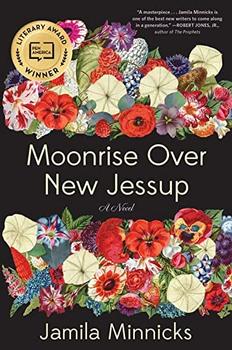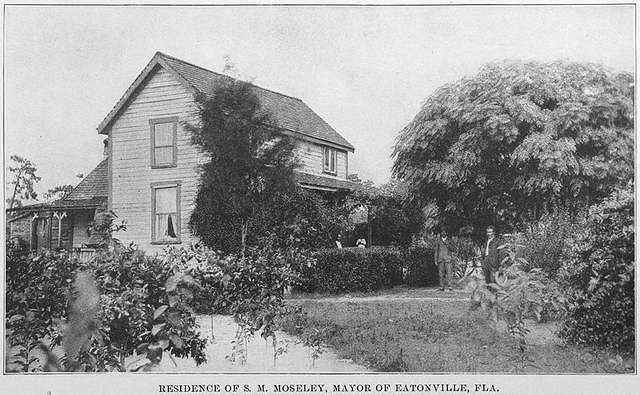Summary | Excerpt | Reviews | Beyond the Book | Read-Alikes | Genres & Themes | Author Bio

This article relates to Moonrise Over New Jessup
 Jamila Minnicks' debut novel Moonrise Over New Jessup takes place in an all-Black town in 1950s Alabama. Residents are wary of integration, preferring to exist in their own space rather than being left to contend with racism in a white-dominated society. In an interview with The Rumpus, Minnicks explains that she wanted to write about this type of community because "Towns and places like New Jessup did exist, and many still do … Between the late 18th and early 20th centuries, it is estimated that more than 1,200 Black towns and settlements were founded in the US." She goes on to specify, "New Jessup embodies some of the larger communities that we built for ourselves … places where Black people owned acreage and the community employed city planners to manage growth. Where Blackness was the center of everything from our celebrations to our disagreements."
Jamila Minnicks' debut novel Moonrise Over New Jessup takes place in an all-Black town in 1950s Alabama. Residents are wary of integration, preferring to exist in their own space rather than being left to contend with racism in a white-dominated society. In an interview with The Rumpus, Minnicks explains that she wanted to write about this type of community because "Towns and places like New Jessup did exist, and many still do … Between the late 18th and early 20th centuries, it is estimated that more than 1,200 Black towns and settlements were founded in the US." She goes on to specify, "New Jessup embodies some of the larger communities that we built for ourselves … places where Black people owned acreage and the community employed city planners to manage growth. Where Blackness was the center of everything from our celebrations to our disagreements."
The first legally sanctioned Black settlement in what is now the United States was Fort Mose in the territory of Florida. It was established in 1738 by the Spanish, who granted sanctuary to some enslaved people fleeing English plantations during a time when various European powers were struggling for control in the New World. Following the Civil War, all-Black towns founded by former slaves, known as "freedmen's towns," cropped up all over the US. Communities founded by and for Black people continued to regularly form and be maintained well into the 20th century. Examples include Brooklyn, Illinois, a town founded in 1823 by Black families, some fleeing slavery, who had left the state of Missouri; the resort town of Highland Beach, Maryland, founded in 1893 by Laura and Charles Douglass (son of Frederick Douglass); and the rural settlement of DeWitty, Nebraska (later Audacious), established by Black homesteaders in 1908.
Minnicks suggests in her novel that settlements like these could offer Black Americans a level of freedom and support they were unlikely to experience elsewhere, giving them the power to build economic and social stability as a community. However, Black towns, as well as Black neighborhoods in cities, also sometimes became targets for large-scale racist violence. One of the worst of these incidents was the 1921 Tulsa Race Massacre, in which a white mob destroyed the Greenwood neighborhood of Tulsa, Oklahoma, a prosperous area known as "Black Wall Street," and killed as many as 300 people.
Jameelah Nasheed explains in an article for Teen Vogue that intentional settlements and communities for Black people, formed within American cities or built as their own legal entities, have historically been established in spite of and in opposition to the white-created "ghetto": "Racist housing policies like redlining and racial covenants … prevented Black people from buying or even renting property in certain sections of many cities … To this day, white society remains complicit in allowing Black people to be relegated to these strategically created ghettos." Nasheed's article also focuses on how Black spaces continue to be built on Black-owned land, mentioning a group of families who bought 97 acres of land in Georgia in September of 2020 to create a community named Freedom.
While Black communities like those described by Nasheed still often lack inclusion in mainstream American history, Minnicks is far from the first novelist to portray one. Another contemporary writer who has set a story in a historic Black community is Kaitlyn Greenidge, whose Reconstruction-era novel Libertie takes place in the settlement of Weeksville, a Black neighborhood founded in Brooklyn, New York in 1821. And to cite a much earlier example, Zora Neale Hurston grew up in Eatonville, an all-Black city incorporated in Florida in 1887, and wrote it into her novel Their Eyes Were Watching God (1937).
Residence of S.M. Moseley, a mayor of Eatonville, Florida (1907)
Source: New York Public Library
Filed under Places, Cultures & Identities
![]() This "beyond the book article" relates to Moonrise Over New Jessup. It originally ran in March 2023 and has been updated for the
November 2023 paperback edition.
Go to magazine.
This "beyond the book article" relates to Moonrise Over New Jessup. It originally ran in March 2023 and has been updated for the
November 2023 paperback edition.
Go to magazine.



When an old man dies, a library burns to the ground.
Click Here to find out who said this, as well as discovering other famous literary quotes!
Your guide toexceptional books
BookBrowse seeks out and recommends the best in contemporary fiction and nonfiction—books that not only engage and entertain but also deepen our understanding of ourselves and the world around us.